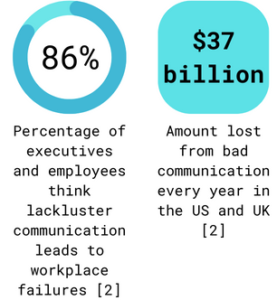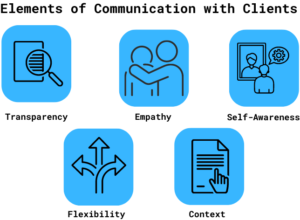- Industries
Industries
- Functions
Functions
- Insights
Insights
- Careers
Careers
- About Us
- Marketing & Advertising
- By Omega Team

Introduction
Communication is an essential and inseparable aspect of our daily lives, and we cannot live without communicating with anyone. Communication can occur in two ways: in-person or through various social media platforms. Communication strategy is the process of planning how to share information. It is the choice of the most valuable objectives of communication and recognition of a particular brand and its strategies in terms of attitude.
Elements of Communication Strategies
There are a number of elements to consider in communication strategies:
- Face-to-Face Communication
- Social Media
- Electronic communications such as email
- Press releases
- Public relations work
- Direct marketing activities and even products themselves
Role of Communication Strategies
Communication is so much more than a simple verbal or written exchange of ideas and information. Communication plays a critical role in learning, building relationships, and establishing trust-all of which are essential to both personal and professional development. [1]
- Must be able to listen effectively to understand others
- Must be able to speak up when necessary
- Taking responsibility for thoughts and actions
- Must know how to present our ideas persuasively [3]
Types of Communication Strategies
There are four major communication methods:
Verbal Communication:
- Use a strong, confident, and easy-speaking voice
- Use active listening
- Examples include advising and speaking to large groups
Non-Verbal Communication:
- Facial expressions
- Gestures and movements
- Physical appearance
- Eye contact
Visual Communication:
- Data visualization through charts
- Animations
- Infographics
- Make them easily comprehensible
Written Communication:
- Strive for simplicity
- Keep a file of writing you find effective and enjoyable and emulate that style
- Examples include Press/News Releases, Emails
Importance of Communication Strategies with Clients
The more we communicate with our customers, the more likely they are to remember us and our business. Good communication helps businesses develop trust with their clients and articulate their needs, expectations, and any challenges. They want to feel valued and appreciated. They want to feel confident that they can contact you if there are any issues. They can also provide feedback that can help you improve your business. [1]

Elements of Communication with Clients

Tips for Improving Client Communication
Here are a few tips for improving client communication:
- Train employees in how to interact with clients
- Make communication easy between your company and the client
- Maintain respect between management, employees, and clients
- Expect and acknowledge feedback from clients and employees
- Correct errors and miscommunications proactively
The Relevance of Communication
Effective communication is important in business as it allows businesses to convey clear, strong messages about strategy, customer service, and branding. A business building a brand reflects a consistent message tailored to its audience. Internal communication builds rapport among employees and managers and encourages teamwork and collaboration. [3]
Conclusion
Communicating effectively is vital to succeeding as a professional. By avoiding common communication mistakes, we can deliver better results while increasing profits and winning more clients. By following the strategies discussed above, improvement could be seen immediately. However, it is important to note that communication is not just a tool to win over new customers; it is also essential to building and maintaining your current relationships, both personal and professional. When we communicate well, our co-workers, boss, family members, and friends respect us more.
Subscribe
Select topics and stay current with our latest insights
- Functions